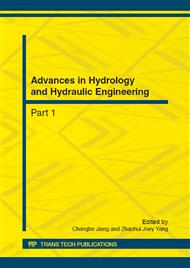p.1151
p.1155
p.1161
p.1168
p.1172
p.1177
p.1182
p.1191
p.1197
Simulation Study on the Characteristics of Flow Field in the Process of Wave Impact
Abstract:
In order to study the characteristics of flow field in the process of wave impact, two-dimensional regular wave numerical models were established based on the software FLUENT. RANS equations were adopted. The standard equations were used to close the Reynolds equations. VOF method was used to reconstruct the free surface. After three typical cases of wave slamming on open-piled structures were reproduced, the models were verified by experimental data and the flow field surrounding the structure was displayed visually. Then the processes of wave impact under various wave height, period and over height were simulated. The influences of the three parameters on the distribution of vertical velocities were analyzed, which shows that the distribution rule of the vertical velocities is similar to the wave impact pressures.
Info:
Periodical:
Pages:
1172-1176
Citation:
Online since:
October 2012
Authors:
Keywords:
Price:
Сopyright:
© 2012 Trans Tech Publications Ltd. All Rights Reserved
Share:
Citation:


